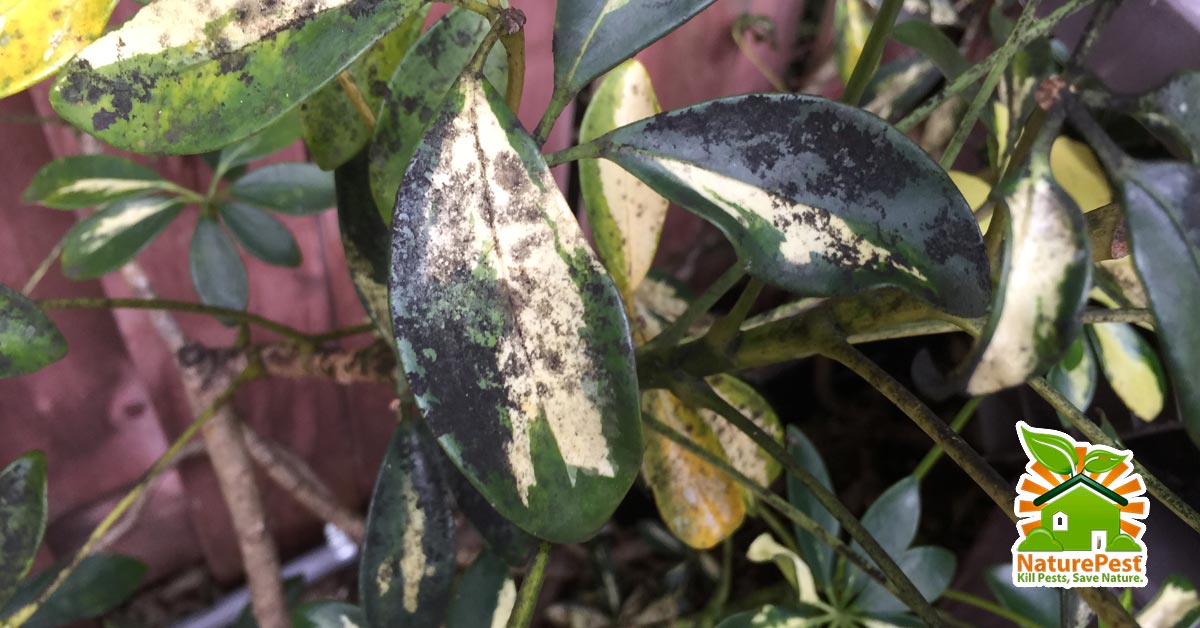Schefflera is a very durable and hearty shrub for South Florida but occasionally it gets infested with scale insects but Schefflera Pest and Diseases Control is quite simple.

The most popular type of Schefflera is arboricola also known as dwarf Schefflera which has a a dark green or variegated variety leaf with bright yellow and green, it is great as shrub or hedge.
Schefflera is adaptable in full sun, partial sun or full shade and is great for shady areas. it prefers light, sandy, well-drained soils. Schefflera plant prefers soil which is kept dry and not wet.
Schefflera does well in central and south Florida, south Texas and along the coast of California.
Taxonomy of Schefflera arboricola
Symbol: SCAR10
Group: Dicot
Family: Araliaceae
Duration: Perennial
Growth Habit: Shrub, Tree
Native Status: L48 N
Kingdom: Plantae – Plants
Subkingdom: Tracheobionta – Vascular plants
Superdivision: Spermatophyta – Seed plants
Division: Magnoliophyta – Flowering plants
Class: Magnoliopsida – Dicotyledons
Subclass: Rosidae
Order: Apiales
Family: Araliaceae – Ginseng family
Genus: Schefflera J.R. Forst. & G. Forst. – schefflera
Species: Schefflera arboricola (Hayata) Merr. – dwarf umbrella tree
Source: http://www.plants.usda.gov/core/profile?symbol=SCAR10
Bacterial and Fungal Diseases of Schefflera
Pseudomonas leaf blight Pseudomonas cichorii
Xanthomonas leaf spot Xanthomonas campestris pv. hederae
Damping-off Pythium splendens
Alternaria leaf spot Alternaria panax
Phytophthora leaf spot Phytophthora parasitica
Colletotrichum gloeosporioides
To help prevent diseases of Schefflera avoid overhead or direct irrigation, do not over irrigate, best to irrigate first thing in the morning to allow water on foliage to be burned off by the sun, avoid watering in the evening or at night.
If fungus doses occur it is important to know exactly which one of the funguses it has in order to select the right fungicide. In some cases a natural Copper fungicide/bactericide like CuPro 5000 will be suffice, others may require a Systemic Fungicide Heritage, Cleary 3336.
If it’s a bacterias if the fungus that the Schefflera has is not on the label it will not control it, buying an over the counter fungicide that says cure 100 diseases won’t cure it if it’s not on the label, a fungus may be resistant to a particular type of fungicide. You will have to do some research or get a laboratory analysis in order to get the right diagnosis.
You need to know if it’s a fungus or bacteria causing the damage a fungicide might not work if your Schefflera has a bacteria.
Insects and Mites of Schefflera
Aphids
Caterpillars
Fungus gnats
Mealybugs
Scales
Shore flies
Thrips
Most insect problems on Schefflera can be easily controlled with natural products like EcoVia which is what we mostly do, except for the occasional mite which will sometimes require a miticide such as Avid.
It is important to understand the life cycle of each pest you have on the plant, how it breeds, how often it breeds, how many nymphs can it produce per breeding cycle, and how it molts in order to break that breeding cycle and control the pest.
The biggest mistake most people make in trying to control insects is to assume that one pesticide will control all there pest problems with one application. Some pests you can knock down with one application while others may require timed repeated applications to control.
For really persistent pest infestations a systemic root drench with Dominion 2L might be required to get long term control.
Mites aren’t insects so if you have a mite problem and you apply an insecticide you will not get control.
In situation where you have high pest pressures or frequent infestations do to mono-culture such as in cookie cutter developments or HOA Home owners associations or commercial properties where thousands of Schefflera have been planted, an integrated pest management approach is required of weekly inspections and applications to get control and treat at the first sign.







